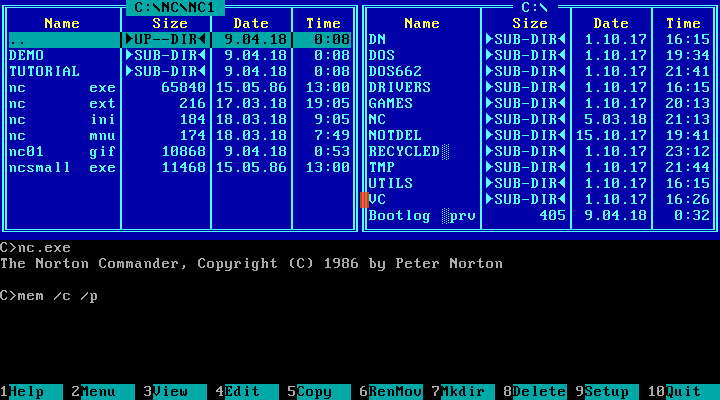
For example, IntelliJ IDE has a "Commander" window (complete with uniformed men's icon) that manipulates files using the same shortcut keys as Norton Commander. Norton Commander does not have native support for LFN in real mode and will cut it.ĭespite its declining usage, Norton Commander was very popular during the DOS era and has been heavily cloned.

To maintain LFN while working in real mode, Norton Commander 5.51 requires the use of the Terminate and Stay Resident (TSR) utility. Symantec released Norton Commander 5.51 to support long file names using standard Windows APIs. Windows 95 includes a new graphical shell called Windows Explorer and supported long file names (LFN). In addition, it also includes a built-in text file viewer (called with the F3 key) and a text file editor (invoked with the F4 key). Thus, without the heavy use of the mouse (although mouse functions are integrated around version 3.0), users can perform many file manipulation actions quickly and efficiently.

At the bottom of the screen, Norton Commander displays a list of commands extended on request by the CTRL and ALT keys. Each panel can be easily configured to display information about other panels, directory trees, or a number of other options.

After starting the program, the user sees two panes with the file list. Norton Commander is easy to use because it has a constant view of two file manipulation objects at once. John Socha began work on Norton Commander in 1984 at that time, it calls it "Visual DOS" or "VDOS".


 0 kommentar(er)
0 kommentar(er)
